When did you last see your tutor?
A couple of different things recently brought this book to mind, apart from reading that great interview with Posy Simmonds this week. Firstly, Bryan Talbot in what was very much his own version of the history of 'comics' recently in the Guardian, credited himself along with Raymond Briggs with introducing the 'graphic novel' to Britain in 1982. Even allowing for the existence of such a thing, that would of course be complete bollocks. Posy's True Love came out in 1981. I'm not putting up a different candidate for primacy, because you know I have no time for that race-to-the-patents-office mentality, but we can't let faulty facts end up in Wikipedia (Hell, it's already been in the Weekend Australian, and THEY gave him a four-year start). 
The other thing that reminded me of this book was my argument over the last few days about the need to step outside of comicbook culture to view our subject ('that thing of ours'). You see, Posy is a good example of an artist who has worked entirely outside of that all her life (the reason indeed perhaps why she might be overlooked by Mr T, whose artistic ideas exist entirely within it). Her cartooning career started in 1969 (she'd have been twenty four) when she drew a regular panel cartoon titled Bear in the British newspaper The Sun. I can't find a single example of it online, but I think I just scored a copy of the 1969 book of the series (there was a second in 1975). More on that when it arrives. She went on to illustrate for the Guardian and started her series The Silent Three of St. Botolph's there in 1979. Later she did some great childrens books; her Lulu and The Flying Babies was a favourite around this house, and also the Famous Fred animated film, based on her book Fred, with Lenny Henry doing the voice. I had a lady friend in 1981, just before the book under discussion appeared, who followed Posy in the Guardian (as she checked in on Feiffer in the Observer Sunday magazine and Claire Bretecher in the Times Sunday magazine whenever those other papers fell within reach) who had no idea what the hell I was talking about when I showed her the cartoon novel I was working upon. She saw no possible connect between what Posy was doing and what I intended. I mention this to show how far outside of comic book culture Posy is and was. I thought my own thing (The King Canute Crowd) had no whiff of it whatsoever and I was anxious that it shouldn't. But there you go.
True Love, as I understand, was drawn specially as a story-book, as opposed to using material from the Guardian as her other two or three books around the time did, though it still used characters from the Silent Three. You can see the density of the work in the spread above, and also that it was printed in black, with one colour. The sequence you can glimpse that is predominantly pink is taking place in the memory of one of the characters.
The story is a satirical little piece about office girl Janice Brady who thinks the boss has an eye for her. Posy could, and still can, compose kinetic sequences as well as anybody in the strip biz.
I like the way she references other idioms, such as the boldly designed graphics of the soap opera strips. Sometimes the pseudo-heroine in these sequences looks deliberately badly drawn, somewhat crosseyed under a weight of mascara, as though Posy wants us to know that she is alluding to the idiom in its most ordinary generalisations rather than to the best it can offer;
Here she evokes a pastoral mood with delicate traceries of flexible pen:
A couple of pages where we lose sight of the characters:
And a pastiche of the painting by William Yeames, 'When did you last see your Father,' which was a subject of much hilarity with a certain generation in Britain, so that I was amused to find, quite late in the day, that my late and much missed Auntie Ella thought the original painting was intended as a joke.
My records show the book was published in hardback in Oct 1981, soft cover in '83 and has been gone since then. Worth noting is Posy's date on the pastiche, '1979', which appears quite late in the piece, so that we might assume she started it in '78 and it may even have preceded the start of the Silent Three in the Guardian. In other words, was she thinking of a book-length story before the self-contained, once-a -week version? Somebody should ask her about that one day.
In a better world, you'd read my affectionate recollection and immediately go out and buy a copy.
Labels: classic strips(2), old books(1)
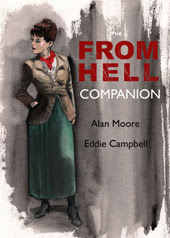


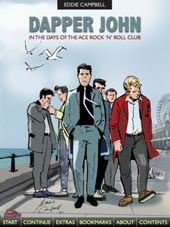
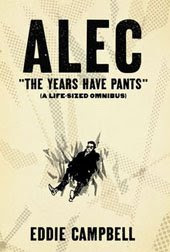
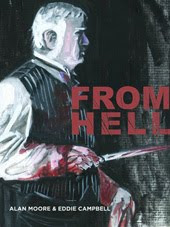
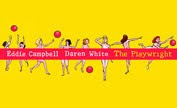
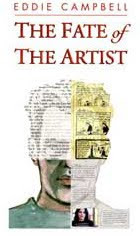
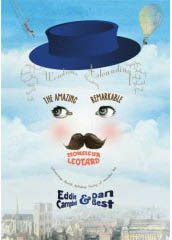





23 Comments:
I've never heard of her, but I link the freedom with which she draws. You're right. I can tell that she's not bogged down. On the other hand, I'm reading Talbot's Alice book right now, and I'm having trouble with it. Not that it's hard to read or anything. I can fallow it fine. It's just, I don't understand where he's going with all this. If it were on TV as an animated history, or written as a book, I think I could get into it more. It works about as well in it's format for me as Shakespeare would work as a novel. Does that make sense? It's the first thing by Talbot I have not felt any excitement for. Why do you think this is? Didn't you say you liked it?
Ms Simmonds is the subject of an interview appearing in the Comics Journal fairly soonish...hope it's a long one.
A couple of things which might interest:
Metafilter recently had two threads on American folk music which caught my eye: Down with the old folks at... MySpace and Folktunes.org - The Folktunes Archive for teaching and learning.
And, on the Comics front, Nadshot samples strips of Groinal Injuries, and The Superest is a kind of DIY Superhero game for artists...
I like the clear way you disentangle things in this one.
In fact, I don't even have the usual urge to rib you mercilessly.
Statler.
There are some softcover editions for around £10 (GBP) available from www.abebooks.co.uk.
ISBN 0006366775 True Love (softcover)
ISBN 0224018957 True Love (hardcover)
It's not such a bad world, I hope.
Ben Smith
Its like we talk about it down the pub and two days later its...
Posy's new book is out on the 1st November.
Hey, I just had a beer with Marcus!
Mrs Weber's Diary, from the same period, is frankly awesome. We had it at home when I was little - I must have read it aged about 7, and can remember huge chunks of it now. Just an amazingly good dissection of society at the time.
Get on the case, Eddie.
Marcus of the Great Disappearance? I was talking to Internet Simian about him last night! How odd.
In the words of the security guard on the last page of 'Lulu and the Flying Babies', well, I never.
what is it about you Campbells that you can't remember the alliteration?
if you see him again Daren, tell him he's fondly remembered and give him a manly clap on the shoulder.
(Hayley, we'll be in the Ship from 4ish if you need a fill-in waiting point.)
She was back in the Guardian for a while recently, doing a page a week for the books section. She's a very astute humorist as well, some great observation about different types of writer and their assorted vanities.
Go thou here:
http://books.guardian.co.uk/posysimmonds/archive/0,,852391,00.html
also, she's doing a talk at the ICA on Thursday evening: http://www.ica.org.uk/Posy%20Simmonds+15105.twl
This is why you should stay in London, you fool.
I'm going to hide your passport. Mwaha.
Mwahahaha.
I think Raymond Briggs also chatted about her a bit in his Comics Journal interview.
What always amazes me is the artists (at least while they are still alive) who claim to have "created" the "graphic novel". When Jack Kirby died, for some reason National Public Radio decided that Kirby had created the graphic novel. So, for some reason, they phoned Gil Kane to ask him about Kirby inventing the graphic novel, and Kane's first response was:
"No, I invented the graphic novel. I wrote and illustrated HIS NAME IS SAVAGE years before Kiryb or anyone else did anything like it."
(paraphrased from my faulty memory)
Hemlockman: that seems inevitable given that no one can agree what a graphic novel is. Those who usually claim to be its inventors didn't call their works graphic novels at the time, although I've noted earlier that Byron Preiss was using the term for his publications in the mid-Seventies. Hindsight is at work everywhere.
Bryan's first volume of Luther Arkwright (December 1982) doesn't feature the words "graphic novel" anywhere and is actually a part-work, ending with the words "To be continued". James Cawthorn's single-volume adaptation of Moorcock's The Jewel in the Skull (1978) also doesn't feature the words "graphic novel" anywhere but that doesn't prevent my colleagues at Savoy Books from complaining to Paul Gravett every time he doesn't give it the "first UK graphic novel" accolade in each new book. Hindsight, again.
How many graphic novels can dance on the head of a pin?
Eddie,
King Canute stinking of comic-book culture? Really?
I suspect your lady friend was comfortable with Posy Simmonds's work not because of any absence of comicky odours but precisely because it smelled familiar — anyone who grew up reading British humour comics, girls' comics, and newspaper cartoons would find Simmonds's work immediately approachable.
Your work, somewhat more adult and serious in its visual style, would seem relatively strange, alien and unfriendly. "Why doesn't this comic strip look jolly, like comic strips are supposed to look?" You'll sometimes find that an uncomfortable reader's next step is to declare such a work to be "pretentious".
A particularly ugly example of this phenomenon was the infamous Newsnight review of Jimmy Corrigan. (I even remember the panelists saying something along the lines of "I like Posy Simmonds and Raymond Briggs — but this thing is horrible and weird!!")
Your broader thesis still stands, of course.
P.S.
Just being nosy now, but was that lady friend from '81 the character you called "Jane" in Graffiti Kitchen?
And while I'm asking: was Graffiti Kitchen where you committed yourself to the lettering style that I now identify as "Eddie Campbell" lettering? If so, was it specifically intended to evoke graffiti?
(Really, I don't feel I should refer to it as "lettering" at all... smacks too much of "comic book culture", as you put it, and implies an added fracture between words and image that does not exist — in your work.)
(I like the way Paul Pope talks about cartoonists's drawings as a sort of handwriting. I also like the "lettering" — or eschewal of lettering, perhaps I should say — in his self-published work.)
P.P.S.
Maybe it's just coz I recently read Graffiti Kitchen and it's still going round my head, but when I read those pops at Talbot, the word that came to mind was — GAROOGA.
O.K., I'll piss off now. :-)
"Your work, somewhat more adult and serious in its visual style, would seem relatively strange, alien and unfriendly."
She probably liked the Letratone, though.
Colman G
yes, that was Jane. well spotted.
re the lettering. not deliberately made to look like graffiti, but definitely i was fighting to make the lettering and the drawing look like they're part of the same gesture. Herriman is a great example of that. Ca et la have done the French translation using a font made from samples I did specially, but it looks mechanical to my eye. i like to see the the lettering responding to everything that's going on around it, even if this sometimes means it's teetering on the limits of legibility, like a hand-written greeting from a dear friend, or the address on a package that only arrives after having gone to two previous wrong houses.
Post a Comment
Subscribe to Post Comments [Atom]
<< Home